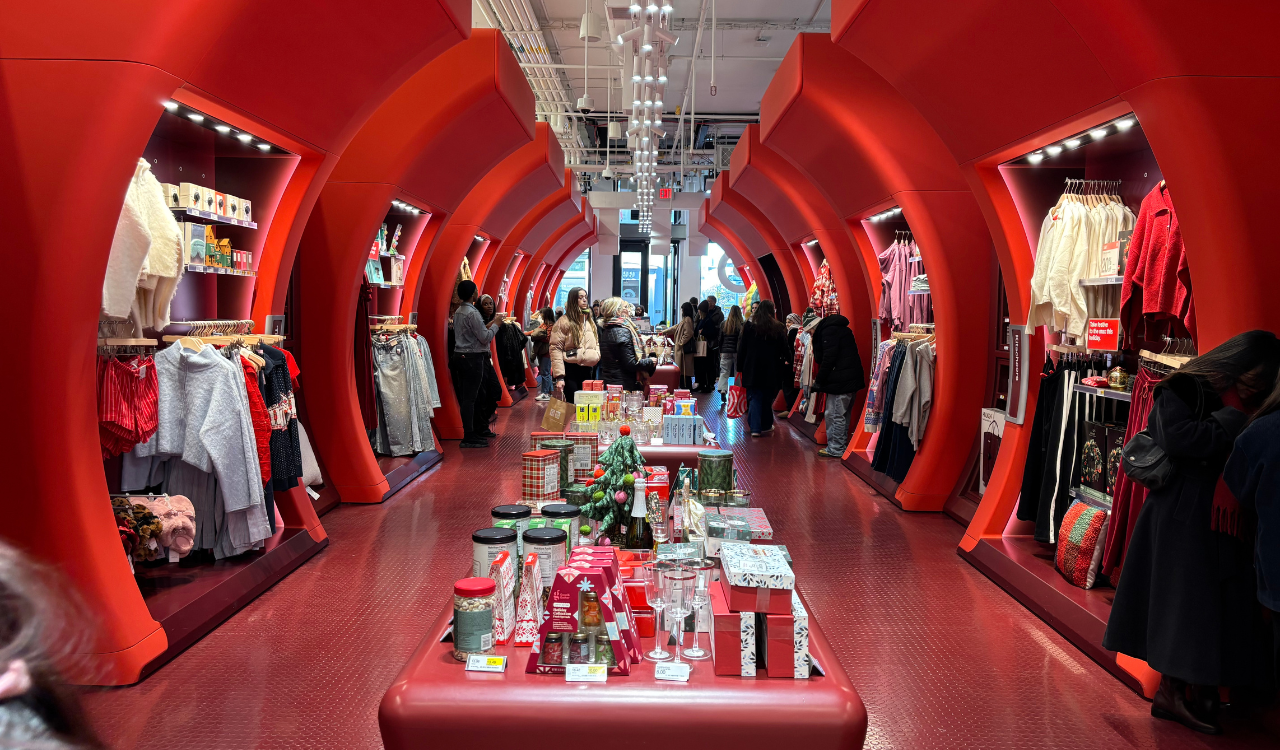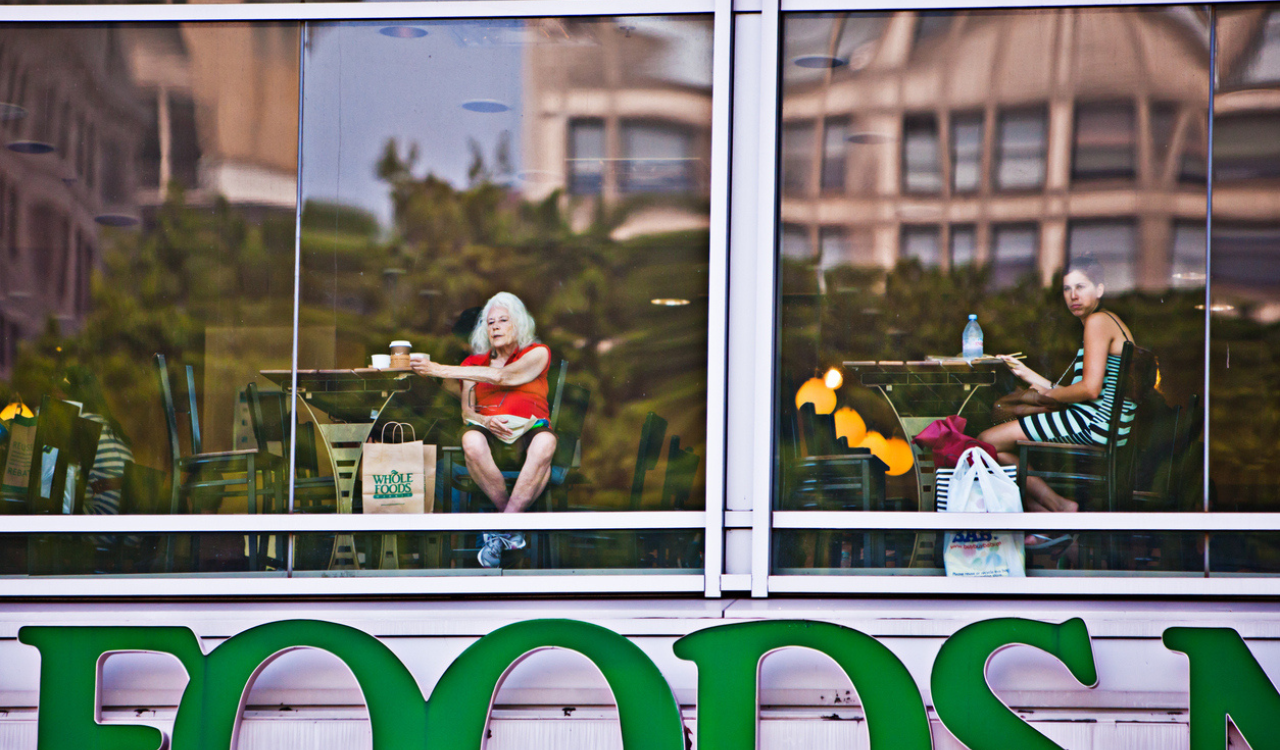A New York minute ago, quiet luxury replaced conspicuous consumption and became all the rage. Now it’s retreated from the headlines with fashion insiders rejecting the phrase as too overused: “An overly TikTok-ified way of describing classic, refined clothing,” the Wall Street Journal reports. Italian designer Brunello Cucinelli, who fully embraces the trend if not the terminology, prefers the phrase “gentle luxury.”
Whether conservative or liberal, high-status individuals may reject brands that become too popular whether logo-emblazened or not. This could put Louis Vuitton at risk, as its classic, logo-heavy Neverfull canvas tote bags are ubiquitous. Luxury resale sites like The RealReal and Vestiarie Collective have made many hitherto out-of-reach luxury brands accessible to the masses. Now anyone with enough disposable income can afford a piece of luxury.
Quiet vs Conspicuous Luxury
No matter what you call it, luxury that is quiet, gentle, and inconspicuous is shaping the near future for luxury brands. The trend is marked by downplayed elegance, along with the traditional requisites of expert tailoring and craftsmanship, the highest-caliber fabrications and materials, and elevated personalized service. Quiet luxury renounces prominent logos and ostentatious displays of wealth by embracing the understated luxury fundamentals of quality with a capital “Q.”
Yet, under the surface, the status that luxury brands represent still exerts a strong pull for many consumers – if not most. Entitlement and social status, referring to one’s rank or position within the social hierarchy, play a pivotal role in one’s self-identity. Owning and wearing luxury brands is an outer-directed expression of personal identity and values.
In other words, identity has both intrinsic (self-expression) and extrinsic (status) components. As Chris Gray, the Buycologist, says, “Luxury purchasing is an interplay of status and self-expression, not either/or, but both. The brands you buy reinforce your sense of self within different social contexts and situations. Nobody will look down on you for buying something for quality. Unlike status, quality is the one people will fess up to.”
Fulfilling Psychological Needs
INSEAD Professor David Dubois, author of “Fulfilling Social Needs Through Luxury Consumption” has done extensive research into luxury consumer behavior and motivations. He explains that two conflicting motives are at work in purchasing luxury items.
- Differentiation: The desire to differentiate oneself, “to be exclusive; to be different; to disassociate themselves from the common herd”
- Assimilation: The drive to assimilate by aligning or “branding” oneself as a member of the in-group
While the assimilation motive might seem to pertain primarily to those seeking to climb the social ladder, there’s safety in numbers and even those at the top of the ladder want to fit in with their tribe. Social signaling is a primary motive for everyone up and down the social hierarchy.
Shifting Tides
Conspicuous consumption and its polar opposite, quiet luxury, ebb and flow in a predictable pattern as the economy fluctuates. When times are good, the restraints come off and louder luxury brands are in vogue, as during the period following the 2008-2009 global recession. Gucci, Balenciaga, Michael Kors and Burberry crested the conspicuous consumption wave only to crash recently.
When the economy goes south, quiet luxury comes back into vogue. Brunello Cucinelli and Prada are riding that wave, up 24 percent and 10 percent respectively last year. Though tucked away within LVMH’s Fashion and Leather Goods reporting segment, quiet luxury brands Celine, Dior and Loro Piana are thriving. While Hermès’ Birkin and Kelly bags have ultra, top status-symbol ranking, the company maintains strict control of distribution, so Hermes’ exclusivity keeps the brand quiet.
Some brands, like Louis Vuitton, seem to have enough bandwidth to flow whether the tide is rolling in or out, but many others can get caught in a rip current when the tide turns.
Psychological Underpinnings
Dynamic growth in the luxury market and across cultures where different social norms apply makes it particularly hard for brands to calibrate their offerings to the current tides. Since 2019, Bain reports the personal luxury goods segment has advanced nearly 30 percent, up from roughly $300 billion (€281 billion) to $400 billion (€362 billion) in 2023. Bain expects it to reach between $585 to $629 billion by the end of the decade, so the tidal shifts will be even more dramatic.
“With the proliferation of luxury across diverse segments and markets, luxury consumption has taken on diverse, novel, and sometimes unexpected forms – within the traditional luxury domain, beyond traditional luxury, and even outside the realm of consumption altogether,” Professor Dubois observed in another paper studying the status-seeking dynamic in luxury consumption.
He wrote that consumers with less experience in the luxury realm, those he calls “luxury excursionists,” are typically from lower-economic tiers. They lean toward conspicuous consumption with prominent luxury logos. Those with greater luxury expertise tend toward quiet luxury brands “to disassociate themselves from the mainstream.”
That’s the general rule yet segmenting the target market for quiet versus loud luxury brands by traditional age or income demographics is difficult. For example, one’s political leanings align with their status-seeking behaviors. Wealthy conservatives tend to rely more on luxury brands to affirm their social status, i.e., conspicuous consumption, while liberals prefer to buy unique, creative quiet luxury brands or experiences to distinguish themselves. “In sum, conservatives want to be ‘better than;’ liberals want to be ‘different from,’” he observes.
Whether conservative or liberal, high-status individuals may reject brands that become too popular whether logo-emblazoned or not. This could put Louis Vuitton at risk as its classic, logo-heavy Neverfull canvas tote bags are ubiquitous. Luxury resale sites like The RealReal and Vestiarie Collective have made many hitherto out-of-reach luxury brands accessible to the masses. Now anyone with enough disposable income can afford a piece of luxury.
Add to that, high-net-worth consumers may turn their noses up at brands using aggressive marketing tactics believing them to be trying too hard. Then there’s also the danger of leaning too heavily on influencers and celebrity spokespeople. Established high-status consumers march to their own drummer and don’t follow the crowd, while younger consumers tend to be more influenced by influencers. But that may change as they mature.
Luxury is an Attitude
Dubois points out that high-status individuals are increasingly looking beyond traditional luxury goods brands in pursuit of greater personal differentiation. This he calls “non-consumption” behaviors, i.e., experiential luxury, such as “investing in physical and affective resources to acquire cultural capital and status recognition that were traditionally attained through luxury.”
In 2023, experiential luxury, such as hospitality, fine dining, and cruises, grew 15 percent year-over-year, as compared with traditional luxury personal and home goods, which advanced only 3 percent. In addition, what Bain defined as “experienced-based goods,” including fine art, luxury cars, private jets and yachts, fine wines and spirits, and gourmet food, rose 10 percent.
Indulging in such non-consumption luxuries is more likely to yield admiration and envy from one’s social group, while Dubois warns of potential negative consequences of consuming and displaying luxury goods in other social contexts. “This dark side of luxury consumption merges at the psychological, social, and economic levels,” he maintains. These include:
- Feelings of being inauthentic as conspicuous consumption displays can reflect undue privilege and give people a feeling of “hubristic pride, which is often viewed as antisocial and selfish.” This can make people feel some portion of shame and guilt when purchasing expensive luxury goods. He also notes that these conflicted feelings particularly impact high-income luxury owners, perhaps because of their awareness of income inequality.
- On the social or interpersonal level, luxury consumers are perceived as less warm and friendly, making them less attractive as new friends. These perceptions may negatively impact those working in “warmth-oriented” or service job settings, creating a hurdle for luxury brands’ in-store personnel. Further, luxury consumers may be viewed negatively as more wasteful and materialistic. And it can harm women on the dating front because it signals to potential mates, she has high financial expectations.
- Luxury goods brands can face potential economic blowback from these negative psychological and social dimensions by diluting the brand’s appeal, a particular vulnerability as brands get too big and conspicuous.
“Luxury brand executives increasingly need to learn about an expanding number of factors that interact – and possibly conflict – in shaping consumption,” Dubois warns, adding, “The vehicles of the pursuit of status constantly change in step with evolving norms and values that prevail in specific groups or at specific points in time.”
Status Sells
In surveys, luxury consumers give various reasons why they buy luxury brands, typically those considered socially acceptable, like quality, durability, and craftsmanship. Few own up to status as a primary driver, yet Dubois’ research shows status signaling is a powerful drive for luxury purchases. “Consumers’ enduring desire for luxury largely derives from the need for status, that is respect, admiration and voluntary deference afforded by others.”
That drive is underscored by a recent survey by the Affluent Consumer Research Company (ACRC). When high-net-worth consumers were asked about the traits or qualities they expect from luxury brands, the majority responded with material quality (70 percent), durability/craftsmanship (61 percent), and innovation/originality (55 percent). Bringing up the rear were status and prestige associated with price point, at 25 percent and 26 respectively.
Yet when calibrated with consumers’ luxury purchase intent, status, prestige, and a brand’s relevance to a modern lifestyle, perhaps reflecting relevance to popular trends like quiet luxury, all were a far greater predictor of spending intention than other qualities.

ACRC’s lead researcher Chandler Mount stresses the difficulty in untangling consumers’ status motivations in surveys. “It’s tricky because consumers (and segments of consumers) may view status differently depending on the context. It could be a purchase driver for something visible like a car or clothing, but it could be an invisible driver for an experience like travel.”
Walking a Fine Line
No matter how it’s measured, the status value associated with luxury brands can’t be underestimated. It has a strong and enduring power, but it also creates tensions for consumers. “Our analysis of the drivers fueling the desire for luxury revealed this desire often stems from conflicting motives. At the heart of it is the need for status, a deeply ingrained and often unconscious force guiding thoughts, feelings and behavior about luxury brands,” Dubois stresses and warns luxury brands to walk a fine line to understand the conflicts and help resolve them.
“We found a common thread: the idea that the drivers, forms, and consequences of luxury consumption – all three dynamic elements of purchases – involve tensions requiring great finesse on the part of luxury brands as they try to approach, communicate with, and ultimately retain clients,” he concludes.





